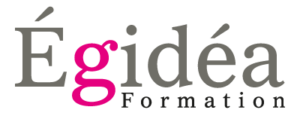
It is not uncommon for a firm to fail to transfer funds from the sub-account to the main account before issuing a check to the client or for the bank to fail to follow an instruction to transfer the funds. The Supreme Court has authority to appoint a successor signatory for the attorney trust account. Because the cash book is updated continuously, it will be in chronological order by transaction. In the description column, the accountant writes a short description or narration of the transaction. In the reference or ledger folio column, the accountant inputs the account number for the related general ledger account. This reconciliation is necessary because the cash balance in your books will never agree with the balance shown on the bank statement.
Cash Disbursement Journal Totals Used to Update the General Ledger
Both the cash amount has to be recorded under the cash credit account and the same amount has to be debited from a corresponding account. Depending on the type, that account could be an inventory account or any other traditional balance sheet account. At the end of the period (usually a month), a Total Payment row will be added to the Cash Payment Journal, showing the total amount for each column. The accountants use data in this journal to make a posting in General Ledger and the subsidiary ledgers. Cash Disbursement Journal is a special journal used to record all payments of cash, also called Cash Payment Journal. This is a journal that we could use if we were to set up the accounting process by hand rather than having a computer system, like QuickBooks.
- Management can use this journal to not only see how much cash has been disbursed, it can also track what cash is being used for.
- This type is commonly used by individuals who want to keep track of their own money and finances.
- It is also much faster to access cash information in a cash book than by following the cash through a ledger.
- The primary goal of a cash book is to manage cash efficiently, making it easy to determine cash balances at any point in time, allowing managers and company accountants to budget their cash effectively.
Record Retention Guidelines
Once the journal is set up, businesses will enter each cash payment into the journal as it occurs. The journal can then be used to generate reports on spending and to track outgoing cash flow. The entries in the cash payment journal are recorded and posted in a similar manner to those in the cash receipts journal. Thus, the entries are entered sequentially into the cash payment journal as they occur. A cash payment journal, also known as a cash disbursement journal, is used to record all cash payments (or disbursements) made by the business. Keeping records is key to maintaining the financial health and well-being of any business or household.
Talk To A Bookkeeping Expert

We’ve highlighted some key details about single-, double-, and triple-column cash books with examples of what each looks like below. Your daily cash receipts should generally be the same amount as your daily bank deposit. For this reason, you might see it being simply referenced as Purchases Discount. For any cash payment that does not involve purchases, the bookkeeper would use the Other Accounts column. The Accounts Payable section is used to record the amount for which the supplier’s account is debited.
The length of time you should keep a document depends on the action, expense, or event the document records. Generally, you must keep your records that support an item of income or deductions on a tax return until the period of limitations for that return runs out. In addition to these general guidelines, each business should consider any industry standards which may affect the holding period of records due to the unusual legal circumstances.
The primary goal of a cash book is to manage cash efficiently, making it easy to determine cash balances at any point in time, allowing managers and company accountants to budget their cash effectively. It is also much faster to access cash information in a cash book than by following the cash through a ledger. If you use the accrual basis of accounting, as we recommend, expenses are recorded in the cash disbursements journal at the time the goods or services are paid for or in the purchase journal if you buy on credit. If you deal with a given supplier many times during the month, you don’t have to record every purchase. You could accumulate all bills for the month from that supplier, then record one transaction in the purchases journal at the end of the month. Bookkeepers and accounting systems record transactions in the cash disbursements journal before the transactions are posted to the general ledger, accounts payable ledger, and other ledgers.
The journal is simply a chronological listing of all payments including both cash and checks. The journal is used to save time, avoid cluttering the general ledger with too much detail, and to allow for segregation of duties. In some businesses, the cash disbursements journal is combined with the cash receipts journal and is referred to as the cash book. A bookkeeper or accountant will usually record these transactions in the cash disbursements journal on a monthly basis before posting them to the general ledger, accounts payable ledger, or other books.
Even the most careful lawyer or law firm can make an honest mistake with an escrow or trust account. Careful adherence to and supervision of the rules will minimize the consequences, but there are certain things that will flow inevitably from a bounced check on an attorney escrow or trust account. The unearned revenue definition will include a « discounts received » column if there are cash payments to suppliers that may enjoy a discount, perhaps for early payment. Thus, the invoice amount is recorded, along with the discount received and the cash payment. Only the discounts receive column total is posted to the general ledger.



Leave a Comment